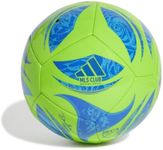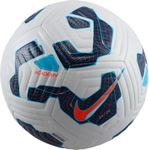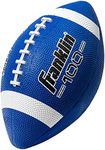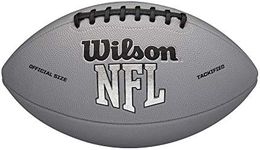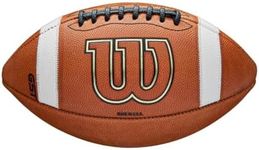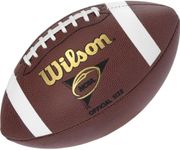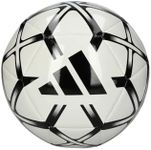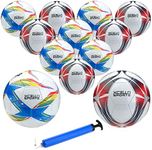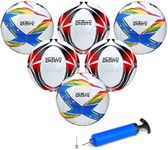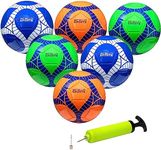Buying Guide for the Best Football Balls
Choosing the right football ball can significantly impact your game, whether you're playing casually or competitively. The right ball can enhance your control, accuracy, and overall performance. When selecting a football ball, consider the following key specifications to ensure you get the best fit for your needs.SizeFootball balls come in different sizes, typically ranging from size 1 to size 5. Size 1 balls are mini balls used for skill training and fun, while size 3 balls are for younger children (ages 8 and under). Size 4 balls are for children aged 8-12, and size 5 balls are the standard size for players aged 12 and up, including adults. Choosing the right size is crucial for proper handling and control during play. If you're buying for a child, make sure to select the appropriate size for their age group.
MaterialFootball balls are made from various materials, including synthetic leather, polyurethane (PU), and polyvinyl chloride (PVC). Synthetic leather balls are often used in professional matches due to their durability and feel. PU balls are softer and offer better control, making them suitable for training and casual play. PVC balls are more affordable and durable, ideal for recreational use. Consider where and how often you'll be playing to choose the right material for your needs.
ConstructionThe construction of a football ball affects its performance and durability. Balls can be machine-stitched, hand-stitched, or thermally bonded. Machine-stitched balls are generally more affordable and suitable for casual play. Hand-stitched balls offer better quality and durability, making them ideal for training and matches. Thermally bonded balls have a seamless surface, providing better aerodynamics and water resistance, perfect for professional play. Think about your level of play and how often you'll use the ball to decide on the construction type.
Bladder TypeThe bladder inside the football ball holds the air and affects its bounce and feel. Latex bladders offer a softer feel and better control but may require more frequent inflation. Butyl bladders retain air longer and provide consistent bounce, making them suitable for regular play. Consider how often you're willing to inflate the ball and the type of play to choose the right bladder type.
Panel DesignFootball balls have different panel designs, typically ranging from 18 to 32 panels. More panels generally mean better control and roundness, while fewer panels can enhance aerodynamics and speed. For casual play, a ball with more panels might be easier to control. For competitive play, fewer panels can help with faster, more accurate shots. Think about your playing style and preferences when choosing the panel design.

